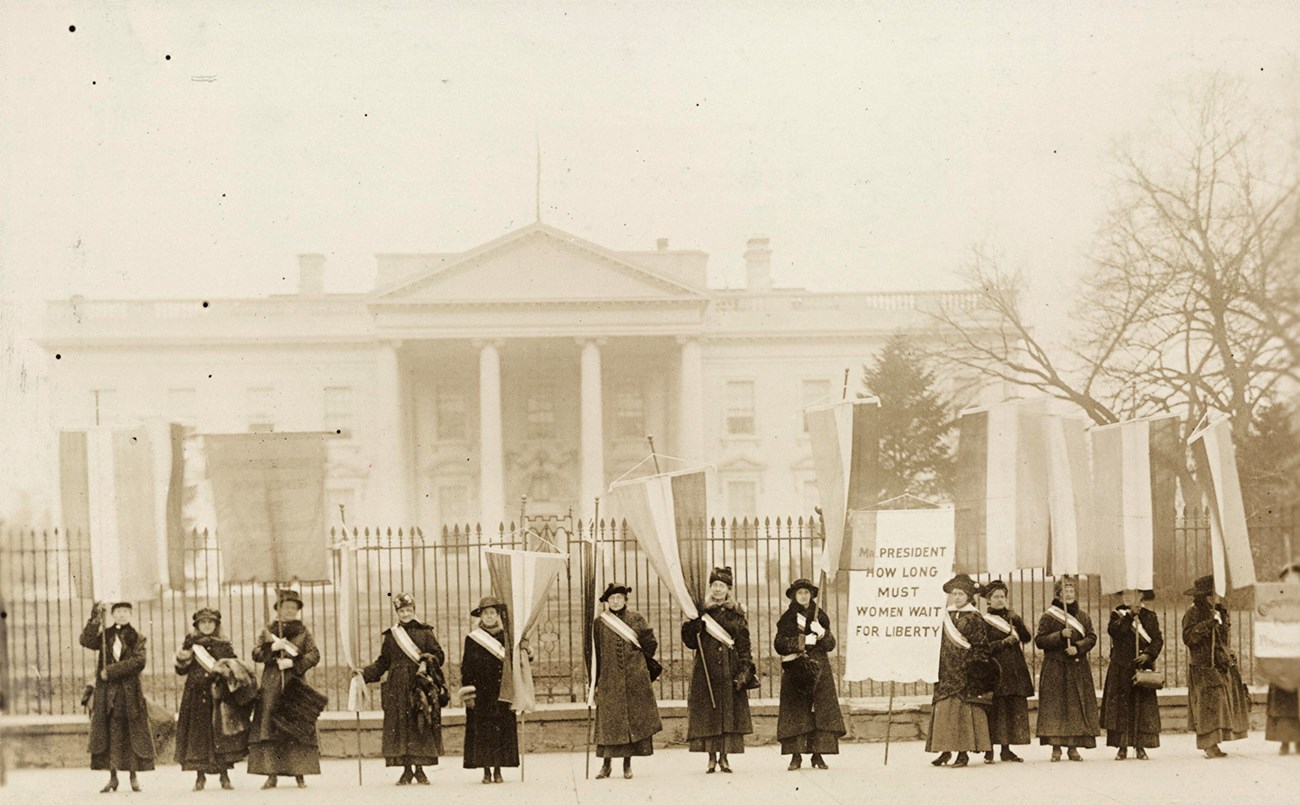Last updated: July 24, 2020
Article
Your Voice Matters: Stand Up For What You Believe In!
The First Amendment protects your right to assemble and express your views through protest. A protest is a public expression of objection, disapproval, or dissent towards an idea or course of action. Individuals and large groups have been protesting for a very long time, about a variety of issues, to stand up for what they believe in. And typically, even when you believe wholeheartedly in your social movement or course of action, there may be others who wholeheartedly support the opposing view. One specific topic we'll explore in this activity is women's suffrage – the right to vote.

Library of Congress
Women fought for the right to vote long before the 19th Amendment was ratified in 1920. Nearly forty years earlier in 1878, early suffragists, such as Susan B. Anthony and Elizabeth Cady Stanton, introduced the proposal that would later become the 19th Amendment. Over the next several decades, women marched, protested, lobbied, and even went to jail in order to win the right to vote.
However, there were people that opposed the idea. One of the popular beliefs was that voting power would diminish a woman’s role as caretaker of the family. Some women and men felt so strongly about this that they founded anti-suffragist organizations.
One thing that many groups have in common, no matter what they are protesting, from the suffragists, to the anti-suffragists, is that they advertise their beliefs to the public. More recently, people will make signs, pay for billboards or television commercials, or take to social media. But one the simplest ways, especially when protesting or marching, is to wear a sash! Check out this photo from the Library of Congress!
Can you think of any big movements going on today, locally or nationally? Or perhaps you have an idea that could improve society as a whole, such as adding another holiday, or free movies at the theater every Tuesday! Talk with your friends and family and create a short list of social causes that you feel are important.
Once you have your list, choose the one you are most passionate about, and create and design your own sash, using materials at home! Think about how you might represent your movement in different design elements on your sash. Tell us why you chose them!
Today, companies use logos to represent their brands, sports teams use mascots to represent their teams, even political parties have symbols to represent their views. The suffragists were the same way! In April of 1916, suffragists Nell Richardson and Alice Burke started a cross-country road trip. Setting out from New York, these two women stopped in cities and towns across America to talk about the importance of women’s suffrage. Along the way, the women adopted a cat that became their unofficial mascot. The cat became a symbol of suffrage!
Just as the cat was a symbol of the Women’s Suffrage movement, what mascot would you chose to represent your movement or cause? It could be a real, living thing, or something you make up, but we are challenging you to design it, and then share a picture of your mascot with us!
Share the sash and mascot you made with us on social media using #FindYourPark / #EncuentraTuParque and tag us @FirstStateNHP for a chance for it to be featured below.

